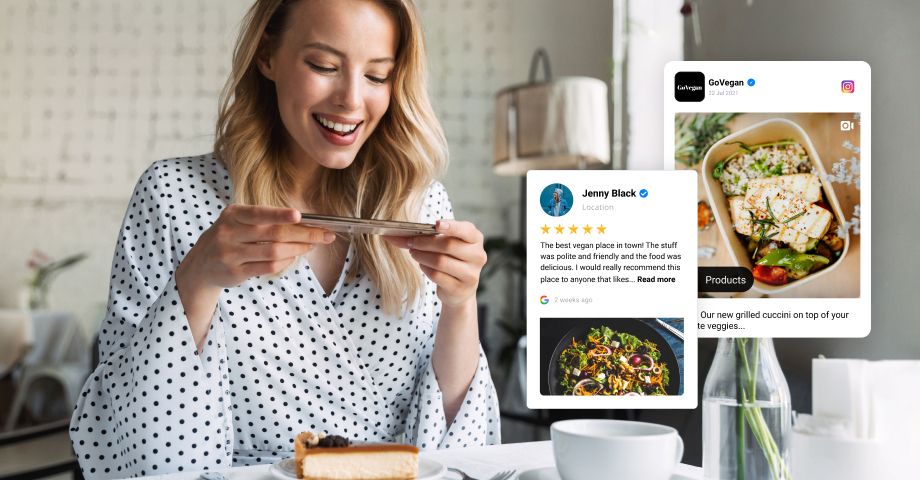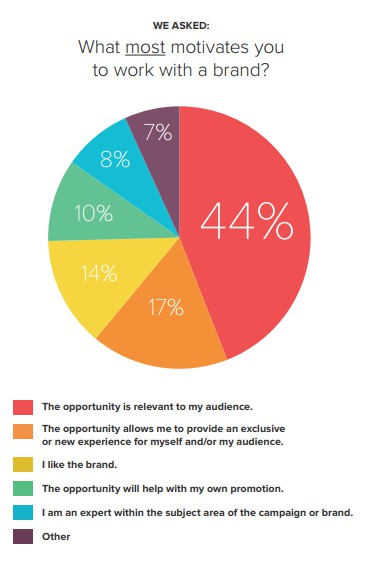We Made These 8 Influencer Mistakes So You Don’t Have To
Is your brand on TikTok or Instagram? Have you ever hired a nano or mega influencer? If not, now is the time to jump on top of this trend. Oh, wait a sec... Before you do that, I wanted to share with you my top 10 regrets from my past influencer marketing campaigns.

Influencer marketing is having a moment. It can be used for everything from building customer rapport to promoting your brand, services, or products. Additionally, it can serve as a medium to promote customer testimonials (yeah, your customers are your #1 influencers), live-stream events, and deliver viral (entertaining) content. Influencer marketing is a true multiplier when done right. But how?
Driven by global digital transformation and the boom of e-commerce, the influencer industry has grown from $9 billion to $16 billion between 2019 and 2022. According to recent research, 3 out of 4 brand marketers intend to invest in influencer marketing in 2022. More and more companies have taken a tried-and-true way to invest in influencers, which drives the industry's growth towards nearly $3 billion in valuation* — and there is no sign of slowing!
Facing such a massive market with millions of influencers across multiple platforms, it is incredibly complex to execute influencer marketing campaigns or work with the right influencers, especially if you are like me, in a B2B, high-tech, niche sector.

When my team started, we had difficulty navigating through so many choices, approaches, content, and channels. Sometimes it was tough to know where to start or when to call it off. Now that we have learned from many of those mistakes, we would love to share our top 8, and if you can manage to avoid them, you will save a lot of money, time, and frustration.
Let’s get started…
#1 “Sharing the same content to all influencers.”
Overall, campaign ROI will be much higher if you customize your content for different influencers.
If you have enough budget, you shall try recruiting multiple influencers who match your industry and brand image, from nano to mega level, sharing different types of content with them, and covering a wide range of target audiences at various stages of their buyer's journeys.
Here are four types of influencers based on the number of followers and the matching content and campaign goals:
1) Nano influencers (500 - 5,000 followers)
- Content: peer-to-peer (P2P) endorsement
- Campaign stage: consideration, conversion, loyalty
- Price range: $100 - 200 per Instagram post
2) Micro-influencers (5,000 - 30,000 followers)
- Content: P2P communications
- Campaign stage: consideration, conversion, loyalty
- Price range: $200 - 300 per Instagram post
3) Macro influencers (30,000 - 500, 000 followers)
- Content: a larger audience with specific topic interests
- Campaign stage: whole buyer's journey but focusing more on consideration and conversion
- Price range: $500 - 1000 per Instagram post
4) Mega influencers (500,000 + followers)
- Content: a global audience with broad topic interests
- Campaign stage: whole buyer's journey but best for consideration
- Price range: above $2000 per Instagram post
#2 “Being on all social media platforms.”
Putting the content only on platforms that best suit your brand (see the graph below). For example, a case study might be better presented on Twitter and LinkedIn, whereas a beauty product launch may go well with an influencer on YouTube or Instagram. Focus on the best-performing platforms, and concentrate your efforts where they can earn the best results.

#3 “Focusing on quantity over quality.”
The more frequently your influencer post, the merrier? The more people your influencer reach, the better?
Consider how to define the success of your influencer campaign at the beginning, so you can maximize your ROI by choosing the right type of influencers on the proper channels and getting aligned with them on strategies. Here are the top metrics you should keep in mind:
Quantitative:
- Number of content pieces per influencer
- Reach
- Engagement
- EMV
- Conversion
- Promo code sales
Qualitative:
- Comments and customer feedback
- Content output
- Feedback from the influencer
- Feedback from internal employees
#4 “Not targeting a specific audience for our content.”
Define your preferred audience for specific influencers. Try to summarize your ecosystem in 2-3 sentences for each influencer in your campaign:
- Target Audience - Who are they, what channels they use, what topics they follow, and should you do localization into different languages...
- Engagement plan - How to get your target audience interested, what your content output looks like, and what the milestones are?
- Logistic - What's your budget to pay for influencers, how much content do we need, what's the campaign's duration, and whether you should consider amplifying the organic influencer content with paid media?
Here's a sample influencer mapping table built for a data analysis software product launch:

#5 “Not boosting the right posts."
Please do not trust your instincts when it comes to boosting influencer posts. It's a tricky question. Too often, we tend to choose a less engaging post to "help" it gain more exposure.
To avoid wasting money, I have created the following rules for myself to check before boosting an influencer's post:
- Engagement - Has the content engaged any audience? Do they bring value to your audience? I typically will not boost anything below a 5% engagement rate.
- Budget - How much can I spend on advertising per day? Do not stretch your budget out over a lot of days.
- Content cadence/frequency - Am I posting too often?
- Timing - When to boost? Right after the post? Is it more effective to do a retargeting campaign?
- Exclusivity - Is the content exclusive?
- Usage rights - Is it possible to promote on multiple channels?
#6 "Asking Kylie Jenner to comment on Quantum Computing."
While it is enticing to contract some mega influencers to make a hit, they may be in a completely different industry.
It is critical to find someone who fits your brand and speaks to your target audience. Influencers themselves do not like straying from their usual topic or upsetting their fans. In other words, an influencer who is relevant to your products is more likely to develop a genuine love for your brand, win customers' trust, and enable a lasting relationship. A recent survey found that relevancy is the top motivator for influencers to work with a brand.

#7 “Not communicating genuinely with influencers upfront.”
You don't have to make influencers fall in love with your brand, but you do need to build a positive relationship with them. So you’ll always have them to back you up in the future.
In B2B tech, our interactions with influencers tend to be much more impersonal than in B2C business. I realized this considerable disadvantage makes most influencers consider the work only as fulfilling the contract. How to add additional value of the brand except for the commission?
You must get to know your influencers better and genuinely communicate with them. It's similar to your preparation before you go on a date. What kind of person he or she is? Humorous or serious? Any social causes he or she is interested in? What has he or she worked on lately?
Studying your influencer's background, portfolio, and social media will give you a better idea of approaching them and nurturing your relationship properly. Below is a sample "love letter" we used to approach influencers :

#8 “Not replying to questions or comments.”
Some influencers like to interact with the audience directly; how great! But others may fail to address questions quickly and respond to mentions promptly. If your audience leaves comments and questions and never gets answers, they may still be fans of the influencer, but they will lose faith in your brand.
To increase people’s likelihood of your brand, you need to constantly monitor social media channels, react to comments or words, and take all the opportunities to enhance brand loyalty. Here’s how to respond to different types of statements:
- Spam. Delete these and if the user is following you, block and report them.
- Basic “thanks” comments. Be nice. Reply something simple as "Thank you for your comments!"
- Insightful comments. These require some thought to respond. However, they can be a start of a genuine in-depth conversation to foster great user engagement as people react to you and the commenter.
- Angry comments. If they have a valid complaint, go through customer service or your PR department to handle it professionally. If they’re just angry or not based on facts, send a private message to explain, then remove their posts.
Summary
As you are ready for your first influencer marketing campaign, here are some final tips for you:
- Get the beginning right; brief your influencers properly to make sure they are aligned with the campaign goal and KPIs upfront
- Don't skip the hard work of identifying the right influencers to work with
- Building positive relationships for the long term, treating influencers as your business partners
- Make continuous optimizations based on proper measurements

